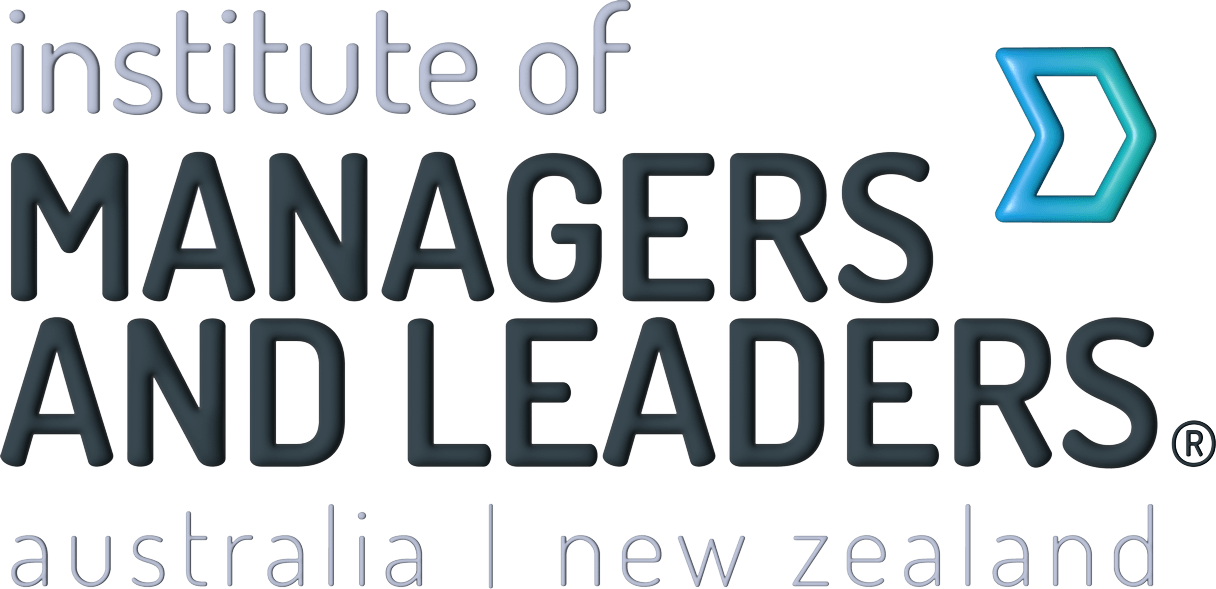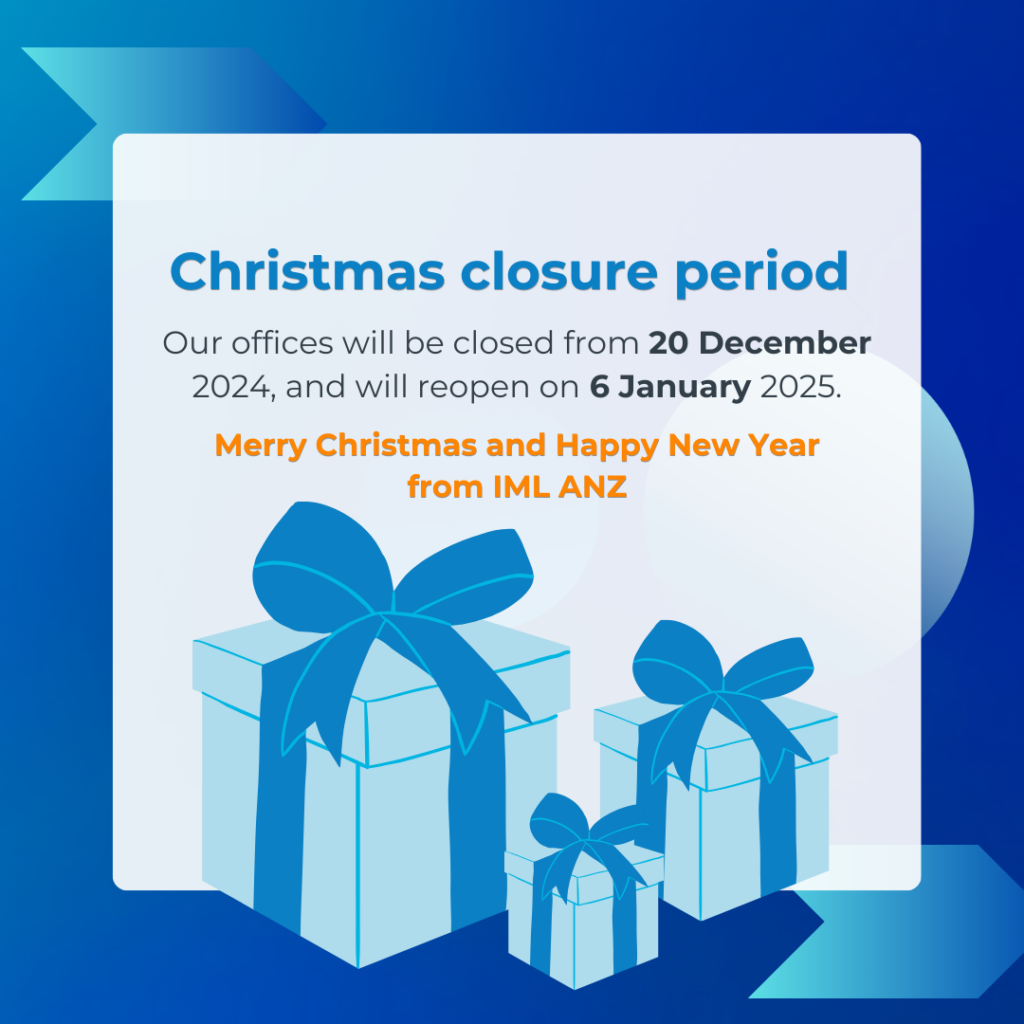Click on the link below to enter your details and get access to the recorded sessions from our first ever IML ANZ Virtual Development Day. You will be redirected to the sessions upon submission.
Protected: Recorded Webinar: How to maximise productivity and continue business as usual in these uncertain times
Protected: Recorded Webinar: Succession Planning – What happens when your best staff member leaves
Protected: Recorded Webinar: Communication and Personality Styles – What Great Managers Do Differently
There is no excerpt because this is a protected post.
Continue readingMentoring: Support and advice during these tough times
When we are all surrounded by so much uncertainty, it helps to find someone we can trust.
From a professional perspective, a mentor can be just that – someone who has our best interest at heart. Although a manager might seem the best placed to provide work-related advice, sometimes it helps to get a different view of things.
Mentoring provides a safe sounding board
As the University of Melbourne’s Mobile Learning Business Manager, Edwina Coller AFIML explains, “There are often areas that mentees don’t want to discuss with their manager because it’s about them personally and not relevant to their role.”
During these tough times, we are all inundated with things that have changed, that we aren’t sure of and things that cause us to be fearful. We may not be comfortable discussing those things with our manager.
Fresh perspectives during tough times
Surviving through difficult circumstances can take a toll on our ability to think and make decisions. That’s why Onno Van Es FIML, Manager HR Strategy and Engagement at Mackay Hospital and Health Service, makes sure his mentees are clear about how the mentoring process can benefit them.
“My style of mentoring is based around adult learning principles. It’s not a lecture style of learning, where I provide all the answers. Rather, I focus on the mentee taking ownership of their learning by being internally motivated and self-directed,” says Van Es.
Whether you are looking for new perspectives, want a sounding board you can trust or simply need to expand your social and professional connections, mentoring can help you.
Become a mentor or mentee now
IML ANZ Members enjoy complimentary access to the Member Exchange mentoring program.
Now is your chance to give and gain support from other managers and leaders during this extraordinary period. A new mentoring cohort starts in mid-May. To take part, register here before 24 April.
MEMBER EXCHANGE – How to conduct effective meetings
One of the many disadvantages of becoming an ‘accidental manager’ is that most of the time they become managers largely due to technical abilities and less because of their people management skills. After all, it’s never easy to manage people, especially their former peers.
Although new people managers are keen and excited about new challenges there are some fundamental aspects of managing teams which they may have taken for granted. One such example is when they inherit a team meeting format. While this format may be highly effective, often it is heavily influenced and suited to the previous manager.
Being a new manager is the perfect opportunity to make your mark and running an inclusive and effective team meeting is an excellent place to start. Below are some key elements which the research indicates will create a dynamic and purposeful meeting culture.
Have a purpose
Why is the meeting being held? The answers to this question will inform the agenda, structure and style. It helps if the purpose is aligned to the team goals, even in a broad sense. A team meeting is also a perfect opportunity to achieve a lot of things and a chance to catch everyone up on what’s going on in the overall scheme of things – gives the team the big picture context and how this relates to the team.
Set an agenda
If you have a purpose, you need an agenda. This list of things you want to cover will determine how much time can be spent on each item. If an item on the agenda requires more time than is available, it needs to be prioritised, moved to the next meeting or given a meeting of its own. Regular meetings also help provide focus and momentum for the team.
Stay on time
Meetings need to start on time and finish on time. Avoid recapping for people who are late, as this indicates that lateness is OK. Update them after the meeting. Timeliness also relates to following the agenda and being purposeful.
Take minutes (distribute promptly)
Someone should be assigned to take minutes at every meeting (ideally someone different each time). The minutes provide a record of what was discussed and agreed. They help keep everyone in the team aligned and set tasks and time frames for action items.
Create a mindful environment
We don’t mean integrating meditation into your meetings. This simply means making sure everyone is aware and, in the moment, not distracted and wandering mentally. One effective way of doing this is to implement ‘no phone’ periods when discussing the most essential items on the agenda. By doing this you’ll ensure that every minute of the meeting counts toward achieving outcomes.
Paint the bigger picture
Always provide people with a fundamental understanding of where the business is going. Don’t just provide a cursory statement like, “Everything’s good”. Go into detail. The better informed your team, the better decisions they’ll make. Avoid the temptation to launch into long diatribes with too much information. Remember, it’s about getting the broader view.
Encourage participation
A simple way to do this is to have different team members lead the meeting. It’s important that this role is voluntary, so people are in their comfort zone or do so due to a desire to grow and develop in this area. Create a safe environment to encourage contribution. When team members are invited to share ideas, different perspectives emerge. Don’t be quick to shoot new ideas down and commend participants when they volunteer their thoughts.
Celebrate successes
Team meetings provide an excellent opportunity to acknowledge successes for the whole team and individual contributions. Team members are more likely to proactively contribute to tasks and roles if their contribution is valued and appreciated. It doesn’t always need to be a big deal, a simple thanks for specific rather than general contributions will usually do. The key is to be genuine and specific – that way it feels personal.
Make it fun
A simple way of building and maintaining rapport within the team is to have some fun together. Although team meetings need to be purposeful, having personality, a few laughs and celebrating successes all contribute to the effectiveness of a team meeting and connection between team members.
These suggestions and recommendations need to be adopted within the context of your work environment and how your teams and structures are organised. Don’t discount good ideas from team members around what would work well for your meetings. The key is to make the meetings relevant and give them your flavour – it’s a great way to establish your own management style.
Eight moments when leaders must communicate well
By Shane Hatton
When it comes to leading an organisation, every leader fundamentally understands the consequences of a poor leadership approach to finances. We understand the consequences of a poor leadership approach to governance or change management. But how many leaders are fully aware of the consequences of a poor leadership approach to communication?
The impact of ineffective or non-existent communication is felt throughout the organisation. It shows up in higher turnover, absenteeism, negativity and stress; and it perpetuates lower engagement, morale, innovation and productivity. A report from SIS International Research in partnership with Siemens Communications found that an organisation with as few as 100 employees could be leaking over half a million dollars every year as a result of communications barriers and latency.
In a 2013 article, Glassdoor for Employers listed the top five reasons why employees love their CEOs. It wasn’t surprising to read that employees want a leader who is visible both inside and outside the company. Seeing their leader leveraging their platform externally increased pride felt by employees. Hearing regularly from their leader internally, whether they are walking the corridors, writing notes or holding regular town hall meetings, created a culture of accessibility and boosted morale.
Whether in a television interview or online video, a town hall or your weekly meeting, the nature of leadership means you will find yourself addressing a group of people at a moment that demands you do more than just speak – it will be a moment that compels you to lead.
Put another way, every opportunity you have to stand up and speak is a moment either to build or to burn your leadership platform. James C. Humes, speechwriter for five American Presidents, said it this way:
‘The art of communication is the language of leadership. Every time you speak, you are auditioning for leadership.’
James C. Humes
Let’s look at eight unavoidable moments every leader will face. Whether you’re ready for them or not, as a leader you’ll need to know how to communicate effectively and lead your way through them.
- Moments of pioneering: implementing change
It has been said that change is the only constant. As a leader you can be certain that you will be required to guide your team through complex change and transition. Some of that change will take you into unfamiliar territory as you pioneer in new spaces. You will need to paint a picture of your desired future, while at the same time intentionally shift fixed mindsets and dysfunctional thinking that causes people to stay where they are.
- Moments of sensemaking: creating clarity
You will experience moments of uncertainty when the narrative is open to interpretation. It is in these moments that leaders distinguish themselves. If you cannot tell the story, your people – or worse, someone else – will do it for you. Great leaders view people and circumstances differently and need to help others do the same. You will be required to make sense of uncertainty and chaos and to control the narrative through clearly articulated and compelling messaging.
- Moments of confronting or reinforcing: shaping culture
Every time you speak is an opportunity to reinforce and shape your desired culture. By culture, this doesn’t just mean what you want people to do but who you want people to be. The stories you share, the behaviour you confront and the behaviour you reward paint a picture of your culture and reinforce the ‘way things get done here’.
- Moments of bonding: building connection
Every moment you have to speak is an opportunity to build and strengthen trust and connection with your team, and trust is a foundation for growth. Leadership author John Maxwell writes, “Teams that don’t bond, can’t build.”
- Moments of mobilizing: casting a compelling vision
Do you have a compelling vision or a common purpose to rally around and move towards? Do you know how to communicate it? In his book Amplifiers, Matt Church writes, “It’s been said that when Caesar spoke men wept, but when Cicero spoke men marched.” For a leader to inspire people is valuable but to mobilise people towards action is better.
- Moments of influencing: strengthening commitment
Do you have great ideas? Do you want people to buy into those ideas? Do you need something from people? The ability to influence people by articulating and communicating the value of your ideas is a critical leadership skill.
- Moments of steering: navigating crisis
There is a challenge and then there is a crisis. As a leader you will be required to navigate both. You must be the calm voice of authority while steering the organisation through turbulence. You must be the steady adviser and voice of reason in seemingly unreasonable circumstances.
- Moments of translating: managing complexity
Can you apply your high-level strategy in low-level situations? Can you turn your ideas into strategy and communicate that strategy to generate action? Can you articulate complex information in a jargon-free way that is useful for your team and organisation? In moments that matter, you need to be able to communicate a message that counts. It’s the difference between a person who speaks and a leader who leads.
While all of these moments are unavoidable, all are also important, because every moment you stand in front of your team or organisation is an opportunity to lead. It’s an opportunity to leverage your platform to accomplish collectively in a moment something that might have taken weeks or months to accomplish individually. The question isn’t if you will face them but rather how you will face them. With that in mind, what do you need to do now to get ready?
Shane Hatton is a leadership and communication expert and the author of Lead the Room – Communicate a Message That Counts in Moments That Matter.
Empathetic and factual communication during uncertain times
By Peter Russo FIML
In front of you lays an ever-increasing amount of distressing news, and growing uncertainty. It’s hard to see what your workplace tomorrow, let alone later today, will look like. Your staff are also confronted by this, becoming increasingly apprehensive, which weighs heavily on them – a knot is building in your stomach. The obstacles perhaps seem insurmountable, and your attempts to find answers just create more questions. You are dealing with an unprecedented event in modern times, and it is now, more than ever, a time to become people-centric as a leader. When the mechanical aspects of business seem to be in seizure, you need to draw on the more visceral attribute of leadership – being human.
Throughout history there are multiple examples where collaboration underwrote the resilience for a group to overcome adversity. The remedy to our current state of affairs is no different. Therefore, it’s vital that you are engaging your staff about not only the economic realities facing your business, but the human aspect. The only way to do this is by showing empathy and dealing with facts.
Why empathy and truthfulness matter
In today’s world people are faced with an incredible number of opinions, some of which are generated with the intent to sensationalise. This creates anxiety, and only acts in the interest of derision as a community.
Your message must be clear, empathetic and constructive. No one has all the answers, but you – as a leader – can provide them with a feeling of security, and you shouldn’t be afraid to admit you don’t know. It’s support, not false-hopes, that will bind your team and ensure you’re moving together in the right direction.
The 24-hour news cycle, and the relentless bombardment of news only acts to aggravate fear and panic. What your staff really need is a clear, concise and candid outlining of facts.
What you can do as a leader
Here are some ideas on how to provide empathetic and factual communication during uncertain times:
- Give regular updates. Do it often and in simple digestible portions. As a suggestion, at least every second day and more often for staff who have been isolated or working from home for an extended period.
- Provide timely information. Tell your teams what you know now rather than waiting until you have all the answers. Use all appropriate channels to communicate new information regularly.
- Do not exaggerate. Whether it is good or bad, stick to the facts. Do not simply look for a positive spin.
- Use a collaboration of ideas. Often staff have sound ideas that can help. Be prepared to unpack those ideas and push them up the organisational chain. In adversity, very few ideas are considered bad ideas as everyone has a part to play.
- Recognise and acknowledge emotions. Understand the behaviours we see are the proverbial tip of the iceberg; the result of the underlying emotions, including fear, doubt and concern. Have open conversations to help allay fears.
- Be open and honest. It is very important to ensure you keep your staff in the loop on how decisions are made and what considerations are being taken.
- Make yourself available. Finally, check-in with your staff. Sometimes a simple ‘how are you?’ can break down barriers resulting from isolation.
The challenges we are facing are unprecedented in modern times. The foundations of our society are being tested, and we ought not forget that. Social distancing is impacting the fabric of our communities and how we collaborate. For many, the work environment, whether it be virtual or physical, is now their sole community linkage and it is essential they maintain a sense of belonging in such an environment. Remember, adversity builds character and over the longer term can bring people together. Create the work community that helps bring staff together and that has some semblance of normal, in a not so normal world at present.
No matter how this turns out, your business will invariably reshape. You therefore are tasked with quite an exciting opportunity – to use a crisis to embed humanistic leadership practices.
Peter Russo is a sessional lecturer at RMIT University and the founder of Engaging Leaders, a professional training and coaching consultancy.
Tips for leaders: using digital and online communication tools effectively
By Margot Smith FIML
So often when there is a dispute at work (or in life) it comes down to communication. But more modes of communication should mean that we get it right more often, yes? Not necessarily.
In this increasingly digital world – it’s more important than ever to make sure we do our best to communicate effectively. And effective communication is a real leadership skill – getting it right could make the difference between getting the outcome you want and not. So it’s worth fine-tuning these skills.
Understanding the many and varied online and digital communication tools
When we say online and digital communication what do we mean? It’s an ever-growing list, but let’s say: email, telephone, videoconference, instant messaging or chat, and text at least.
Keeping in mind that when we are face to face with someone, communicating your message is conveyed as follows: 55% body language, 38% tone of voice, and only 7% words.
So if we’re talking email, and we are reliant on the words themselves – that’s a mere 7%. As we change mediums, we slide up that scale in terms of how much more context the recipient of your message gets and how effectively we get our message across. But it can still be fraught with challenges; room for misinterpreting tone, body language or context.
Communication is a bit of a minefield, and is the culprit for many a relationship speedbump!
Tools for the times
The current circumstances mean that we are all using online and digital facilities much more than usual. For those of us who are fortunate enough to be working from home, technology affords us convenience, but we need to ensure it’s not at the cost of relationships and connections. Hence we need to use them in the right context and be careful that our communication is effective in doing so.
And particularly right now.
That’s why I’ve listed five tips for effective online and digital communication:
- Build a strong relationship offline.
Doing this ensures your online message is received as intended. (This is the most important rule).
I find the stronger my relationship with someone, the more latitude I have with the words on the page, tone of voice and, even, body language. For those times that I need to deliver a message online that is difficult – I need to hope I’ve done the groundwork on that relationship.
If that’s not possible and it’s a new contact that you are building a relationship with, then build rapport by practising active listening. Be ‘present’, listen with all senses, paraphrase what they are saying and use your body language to demonstrate that you are concentrating on what they are saying (this might even help you if you are on the phone).
- Use the right mode of communication.
Tools such as WhatsApp have been around for a while now. Their speed, ease with communicating with few or many, and ability to share photos and memes mean that they are a great tool for keeping in touch. At IML we use WhatsApp frequently – great for sharing team wins, organisational updates and team photos.
But if you’re sending lots of messages, is text or instant messenger the appropriate medium? Sometimes the answer is yes (in an effort to minimise emails or to get an immediate and short response). But if you’re writing an essay via text then maybe consider swapping to phone or email.
- Put yourself in their shoes.
Are your instant messages, texts or emails blunt? Read and re-read it to check it’s ok as a stand-alone message. If you were reading it, would it come across ok? Does it serve its purpose?
- Conduct yourself as if you were face-to-face.
If you are visible on videoconference – concentrate – no sneaking a look at emails or texts. It will send the message that you are not focussed on the meeting. This tip should apply no matter the mode of communication – to be honest you can tell when someone is not concentrating in a teleconference too.
- Use it to build and maintain relationships.
These tools help us keep in touch and stay connected, especially when we can’t be in the same room. Instant chat or messaging, videoconferencing, phone and similar modes of communicating are all great ways to connect. Just remember that building and maintaining relationships is key to any leader. So, use all the tools in your toolkit!
Margot Smith FIML is the General Manager – Strategy & Partnerships at IML ANZ. She is currently mastering the use of instant messaging apps, videoconference, phone and email to manage and lead her team who are spread across three different capital cities.
Communicate with clarity
In times of crisis, we cannot choose our circumstances but we can control the way we respond. That’s why IML ANZ is offering all managers and leaders a Virtual Masterclass on the ‘Communicating with Clarity in Times of Crisis’.
This online will provide you with a ready to use action plan that you can implement in your workplace. Visit the Virtual Masterclass page for more information or to register.











